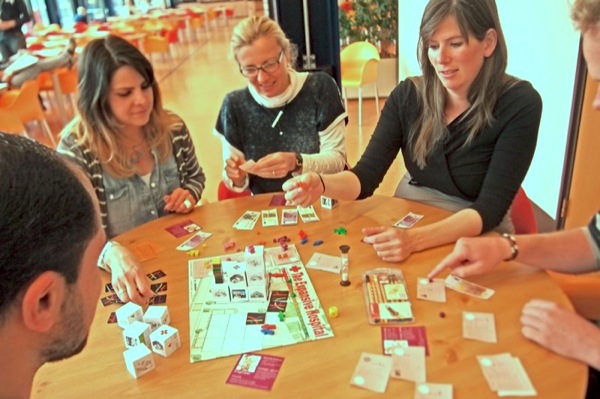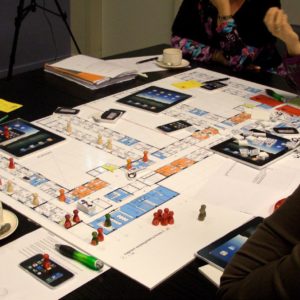Expansive design is a concept defined by psychologist Yrjö Engeström to characterize a particular way of doing interaction design which I developed further in my PhD thesis. It means expanding the design activity towards the use activity, or in other words, connecting them together. This connection is characterized by co-creation; instead of merely producing objects for users, designers co-create objects with the users. As a result, this is expected to provide greater use value.
I further developed the concept by identifying the underlying technique of expansion and contrasting it with the opposite reduction technique. Expansion means progressively taking more parts into account within the object even if they are contradictory, whereas reduction means breaking down the object into parts. I recognize that both techniques can be used in the same project and that they inevitably lead to one another. However, I emphasize expansion for the lack of attention given by previous design studies.
How do these techniques apply to a design project? In one of the projects studied in my thesis, a group of designers must design a future medical imaging center without receiving clear requirements from their users. They deployed the expansion technique by inviting the users for a workshop and together envision what the future activities in the medical center might look like. This is an expansion of the design scope since the task was to design the space, not the activities; however, this was a necessary step to gather good user input. Then, after co-creating with the users, the designers deployed the reduction technique by translating the user input into the drawings of the medical imaging center. In translation, there is always some loss of meaning, hence the reduction.

However, the expansion and reduction techniques did not apply smoothly. These techniques are expected to face contradictions in design projects, for example, between mutually exclusive requirements. The difference is that the expansion technique strives for including these contradictions without resolving them, whereas the reduction technique tries to eliminate contradictions. Since my thesis emphasizes the expansion technique, I have demonstrated how contradictions can be part of a design activity as well as of a design space without hampering development.
The practical examples found in the thesis are about playing games as a means to feel contradictions. These are special tabletop games designed to enact different roles in a project. These roles must negotiate how to design a space and to simulate an activity using that space. The contradiction rises due to the possibilities for action being limited by the relationships players have with one another. This is not necessarily something bad; it can be turned into an advantage if players realize they need each other to create new possibilities.

One of the games described in the thesis, The Expansive Hospital, became an icon of this approach. It is a fully playable board game created from the research findings. The game has been exhibited in the Dutch Design Week in 2014 and it is already commercialized by a company. The main customers are hospitals and construction companies which want learn dealing better with the contradictions of multi-disciplinary work.
In a nutshell, expansive design means designing with contradictions. The contradictions drive the design activity and shape the design space, whilst being prone to change. In particular, my thesis demonstrates how contradictions of activity may become contradictions of space and vice versa. The conclusion is that design is linked to reproduction as much as to the transformation of society.

